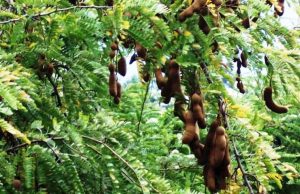Miners, loggers, developers invade indigenous lands. With them came violence and diseases.
Consolata Missionary Brother Carlo Zacquini was ministering among the Yanomami people in a remote area of Brazil, near the border with Venezuela, when gold miners invaded their lands.
After a violent confrontation in which miners killed four Indians and the Yanomami killed four miners in retaliation, government officials moved in.
“But instead of evicting the miners, they evicted the missionaries and the medical teams” who were aiding the indigenous people, recalled Br Zacquini. By the time the Consolata missionaries were allowed to return to their mission on the Catrimani River several years later, “there were thousands and thousands of miners,” he said.
With the miners came violence and diseases like malaria, to which the relatively isolated Indians had no resistance. In one village, no one survived. In others, as many as one-third of the villagers succumbed, some to disease and others to malnutrition.
“Many Yanomami died,” Br Zacquini said. “No one will ever know how many.”
Encounters with outsiders, followed by violence, disease and death, are a tragic pattern in the history of Amazonian indigenous people since Europeans first ventured into the lowlands nearly 500 years ago. Diseases to which South American peoples had no immunity swept ahead of the colonists, decimating the population.
The cycle of disease and violence recurred as fortune seekers invaded and plundered indigenous territories for timber, the meat and hides of wild animals, gold and oil. And it continues today, threatening some of the last people on earth who live in the forest as their ancestors did, shunning contact with the outside world.
“The Amazon is rich in water, timber, underground minerals, wild game and other things, and white people are utilising it,” said Davi Kopenawa, a Yanomami shaman and a spokesman for his people. He remembers when tens of thousands of miners invaded his people’s lands. “I suffered greatly, because our place was polluted and dirty,” he said. “There was sickness. They killed my relatives. But the government did not evict them.”
Although the Brazilian government finally created a territory for the Yanomami people, miners continue to invade, and Kopenawa said his people continue to die.
As many as 5,000 gold miners continue to work illegally in Yanomami territory, turning the forest into huge barren, cratered swaths of land and poisoning the water and fish with the mercury they use to extract the precious metal, he said.
“Gold mining is a disease, and it creates disease” with the mercury, oil and gasoline used in pump motors, which also spill into the rivers, Kopenawa said. “It kills the life of the Indian, the white man, the river and the fish.”
Health experts say miners brought diseases like malaria and tuberculosis into the region, as well as sexually transmitted illnesses, including HIV. Most recently, a measles outbreak swept through Yanomami groups, probably introduced by miners from Venezuela, which is suffering from a measles epidemic.
At greatest risk are several groups of Yanomami who live in the forest. Seven South American countries are home to such isolated people, but the largest concentration is in Brazil, mainly along the heavily forested border with Peru.
The Brazilian bishops’ Indigenous Missionary Council — known by its Portuguese initials as CIMI — has helped indigenous groups win the designation of territories in places where there are still isolated people, including the Yanomami territory and the Javari Valley indigenous territory on the Brazilian-Peruvian border.
CIMI has begun to refer to isolated groups as “free Indians,” to underscore the fact that they have made a choice about how they want to live, said Guenter Francisco Loebens, a 40-year CIMI veteran who specializes in issues related to isolated groups.
The working document for the Synod of Bishops for the Amazon, which Pope Francis has called for October at the Vatican, notes that isolated groups are at particular risk rom industrial activities such as mining, logging, large-scale agriculture; construction of dams and roads; and drug traffickers who pass through the territories they inhabit. Not only is there a danger of violent encounters, but isolated people so lack resistance to common diseases, such as colds and flu, which they could contract even from contact with clothing or implements handled by a person who is sick.
The document calls for the Church o demand that governments protect isolated groups and the territories hey inhabit. The groups should be protected as long as they avoid outsiders, but allowed to initiate contact when they choose to do so, the document said.The document recommends that dioceses near land inhabited by isolated groups, especially along borders, establish special teams to work together on pastoral plans and should ensure that people in the area understand the isolated people’s rights.
Isolated people are symbols of cultural diversity and reminders that this diversity should be valued and respected,” said Francisco Loebens. “They are contributing to the protection of the Amazon, of their territories and of the planet, for the common good.”
The bishops participating in the synod for the Amazon must recognise “the importance of these peoples and of their protection and the protection of their territories,” Leobens said. “They have the right to exist and to make their own decisions about the future.” (Barbara J. Fraser/CT)






